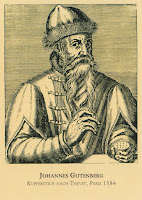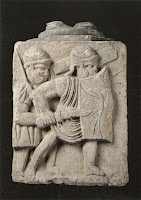The first event of my summer holidays was a short stop on my way to Austria in Lützen, a town in Saxony-Anhalt. Back in 1632 a big battle of the Thirty Years' War was fought there, in which the Swedish forces under King Gustavus Adolphus of Sweden defeated an Imperial army led by Albrecht von Wallenstein. However, Gustavus Adolphus himself died on the battlefield. I visited there the Gustavus Adolphus Memorial consisting of a monument, a memorial chapel and a small museum.
Although I have not visited it myself I also bought these two cards of Lützen Castle, which is home to a museum.
Ambras Castle in Innsbruck was built in the 16th century in the style of the Renaissance. It was built at the behest of Archduke Ferdinand II as gift for his wife Philippine Welser and also housed his famous art collection. It is one of the oldest museums in the World and the only Austrian federal museum outside of Vienna. I really enjoyed my visit. The castle itself as well as the surrounding park and the art collection are amazing. Definitely worth a visit if you are ever in Innsbruck.
In Innsbruck I also bought this card of the Hungerburgbahn. The stations of this furnicular were designed by Zaha Hadid.
Waidring is a municipality in Tyrol at the foot of the Steinplatte. On the mountain there is an interesting dinosaur park.
The last card I bought in Austria shows decorated cows during the Almabtrieb.
After the week in Tyrol I also spent a few days in Mainz. Mainz was founded as Roman military camp Mogontiacum in BCE 38. In the 7th century it was refounded by the Franconians and when it became the bishop's see of Saint Boniface in 745, it was already a fortified town. In the Middle Ages it reached an economic and cultural heyday. In 1514 Mainz became a electoral residence, which it remained until the French Revolution. In 1806 the city became a part of Prussia and since 1950 it is the capital of the German State of Rhineland-Palatinate.
Unfortunately there are not many Roman monuments left to be seen in Mainz and it is even harder to get them on postcards. The Temple of Isis and Magna Mater can be visited below a shopping centre. I got an interesting tour there. The Drusus Monument was erected to honour the founder of Roman Mogontiacum. Another Roman monument is the Jupiter Column.
Actually Mainz is home to two big museums about the Romans, both however were closed due to renovation during my stay. Unfortunately I could not even get cards from the museums, but this multiview shows the Römisch-Germanisches Zentralmuseum in the upper picture.
During the Middle Ages Mainz was home to one of the largest and most respected Jewish communities in the Holy Roman Empire. The Old Jewish Cemetery is as one of the ShUM Sites of Speyer, Worms and Mainz since 2021 on the UNESCO World Heritage List. The New Synagogue was opened in 2010.
Mainz Cathedral is a 1000-year-old Roman Catholic cathedral and the site of the episcopal see of the Bishop of Mainz. It is predominantly Romanesque in style, but later exterior additions over many centuries have resulted in the appearance of various architectural influences seen today. On the marketplace outside a beautiful Renaissance fountain can be seen.
The Cathedral Museum was opened in 1925 and shows various artworks and religious objects used in the Cathedral and as well as in other churches of the diocese.
Johannes Gutenberg was born in 1400 in Mainz and also died there in 1468. He introduced the movable type printing to Europa. The Gutenberg Monument was erected in 1837. It is thus known as first civil monument in Germany.
The Gutenberg Museum was founded in 1900. It is one of the oldest printing museums in the World.
The Landesmuseum Mainz has its roots in a painting collection donated by Napoleon Bonaparte to the city of Mainz in 1803. It moved into its current location in the former electoral stables in 1937, by which time it had grown significantly.
For my collection of Train Stations I found these two cards of Mainz Central Station.
The Republic of Mainz was the first democratic state in the current German territory. As a product of the French Revolutionary Wars, it lasted from March to July 1793. Its parliament met at the building that is now used by Rhineland-Palatinate's state parliament.
The Citadel of Mainz is situated at the fringe of Mainz Old Town. It was constructed in 1660 and was an important part of the Fortress Mainz.
Other three cards I bought show the Theatre, a bridge and my hotel.
Here are some more cards I bought at the Landesmuseum in Mainz.























































































No comments:
Post a Comment